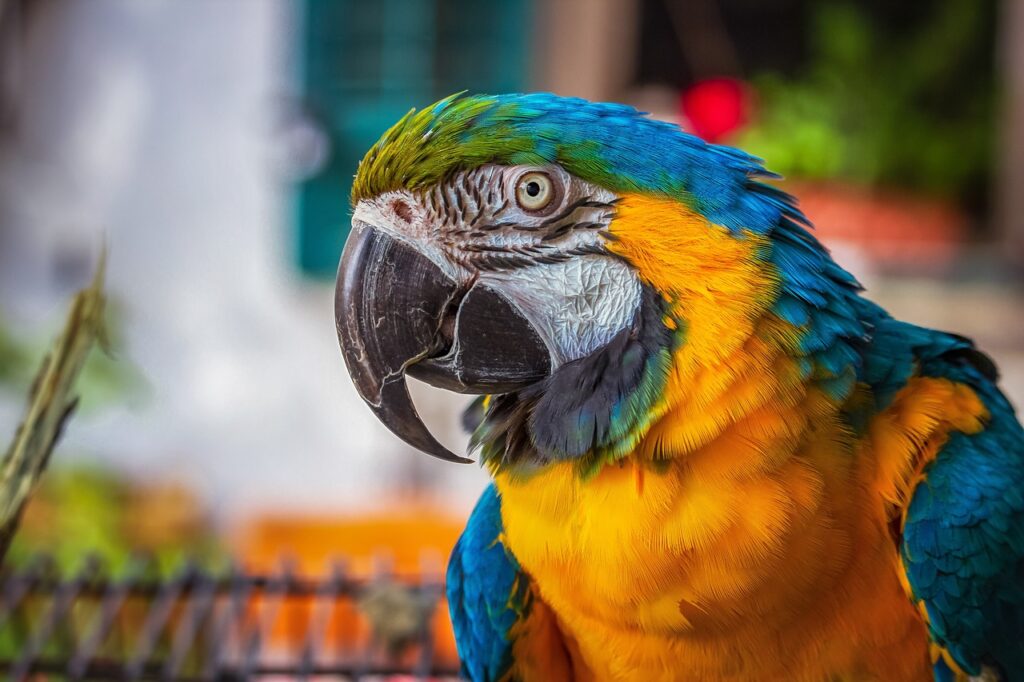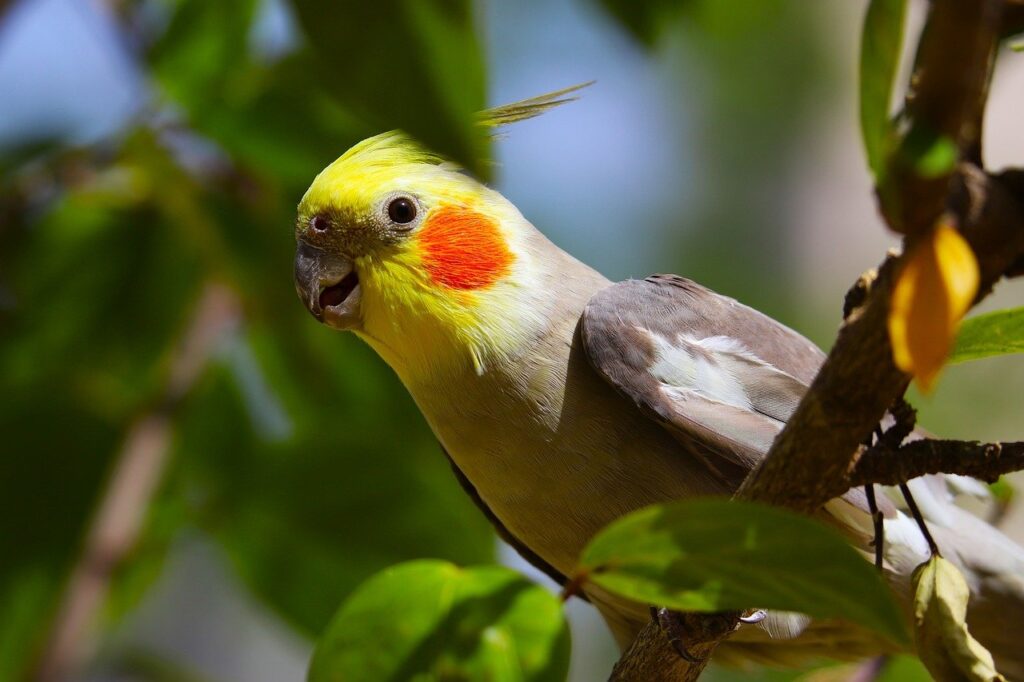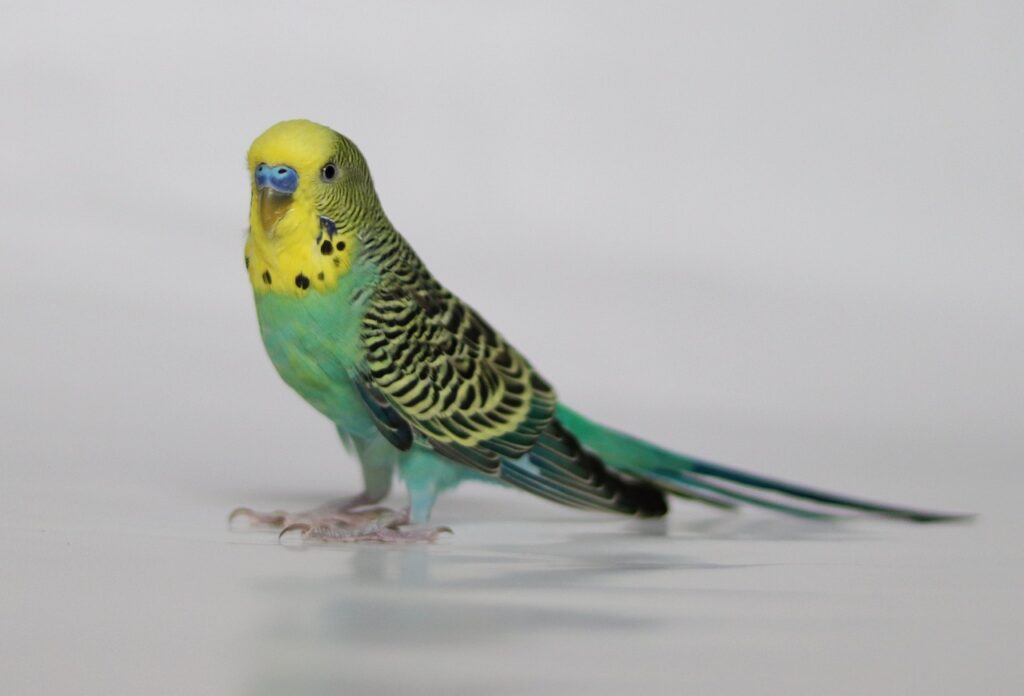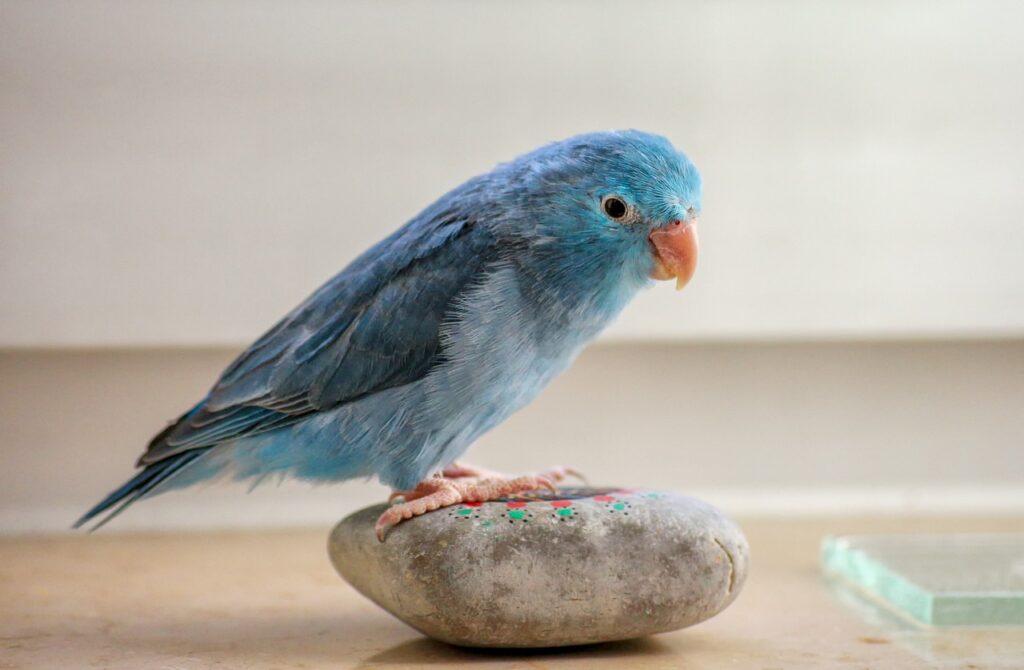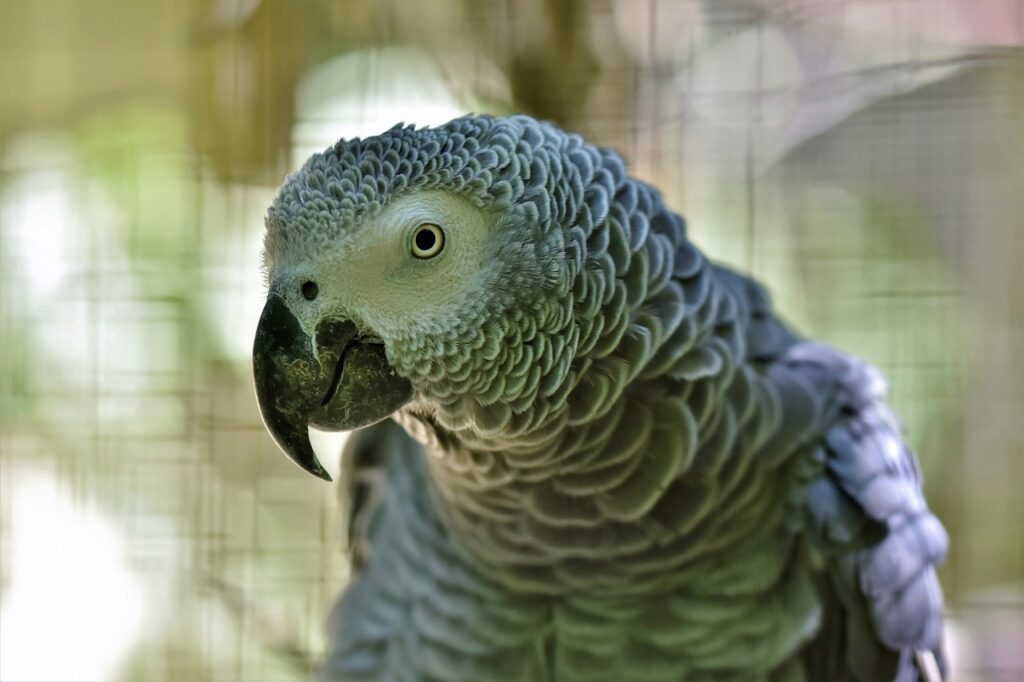Introduction to Bird Breeds: Explore the Avian Wonders
Welcome to the lively universe of bird breeds! Discover birds, breeds welcomes you to investigate the dazzling variety of these padded companions. Birds, with their brilliant plumage and melodic tunes, arrive in various varieties, each with its own one of a kind appeal and qualities. From the alluring parrots to the rich canaries, our definite profiles will assist you with finding the ideal avian ally to light up your life. Go along with us as we dive into the interesting narratives, particular attributes, and magnificent ways of behaving of these astounding animals, and find the ideal bird breed to give pleasure and excellence into your home.
Parrots
Attributes
Insight: Parrots are exceptionally clever birds. They can learn words, imitate sounds, and perform complex undertakings.
Life expectancy: Parrots have long life expectancies contrasted with different pets. A few animal categories can live 50 years or more.
Social Nature: Parrots are exceptionally friendly and flourish with cooperation. They structure solid bonds with their proprietors and can turn out to be extremely tender.
Vocal Capacity: Many parrots are known for their capacity to mirror human discourse and different sounds.
Actual Qualities: Parrots areas of strength for have, noses and zygodactyl feet (two toes looking ahead and two in reverse), which help them climb and handle objects.
Propensities
Perkiness: Parrots are energetic and appreciate toys that challenge their psyches and bodies, like riddles and climbing structures.
Diet: A reasonable eating routine for parrots ordinarily incorporates a blend of seeds, pellets, natural products, and vegetables. A few animal varieties might have explicit dietary requirements.
Prepping: Parrots dress their plumes consistently to keep them perfect and looking great. They may likewise appreciate washing.
Correspondence: Parrots convey through a blend of vocalizations, non-verbal communication, and ways of behaving. Understanding their correspondence can help in holding and preparing.
Settling: In the wild, parrots are cavity nesters, meaning they home in tree openings. Pet parrots might see the value in a settling box or a protected, calm region to withdraw to.
Other Significant Data
Space Necessities: Parrots need more than adequate space to move around, both inside and outside their enclosures. A huge enclosure and open doors for directed out-of-confine time are fundamental.
Mental Feeling: Because of their high knowledge, parrots need a lot of mental excitement. This can be given through intelligent toys, instructional courses, and ecological enhancement.
Social Collaboration: Standard cooperation with their proprietors is pivotal for a parrot’s prosperity. This incorporates conversing with them, playing, and preparing.
Preparing: Uplifting feedback preparing can assist with overseeing ways of behaving and show new abilities. Preparing can likewise fortify the connection between the parrot and the proprietor.
Medical care: Normal veterinary check-ups are mean a lot to screen a parrot’s wellbeing. Proprietors ought to know about normal medical problems, for example, psittacosis, feather culling, and nourishing inadequacies.
Commotion Level: Parrots can be very boisterous, particularly species known for their vocal capacities, similar to macaws and cockatoos. Potential proprietors ought to be ready for the clamor and think about their living climate.
Security: The home climate ought to be ok for a parrot. This incorporates keeping away from poisonous plants, exhaust, and risky articles that the bird could bite on.
Responsibility: Claiming a parrot is a drawn out responsibility because of their long life expectancy and the everyday consideration they require. Imminent proprietors ought to be ready for this obligation.
Parrots make magnificent, connecting with pets for the people who are ready to address their issues. They can give a ton of pleasure and friendship however require committed care and consideration.
Budgerigar (Budgie)
Characteristics
Size: Budgerigars, or budgies, are little parrots commonly around 7-8 crawls long.
Hue: They arrive in various varieties, with green and yellow being the most well-known in wild-type budgies. Different varieties incorporate blue, white, and a scope of pastel tints.
Character: Budgies are known for their well disposed and social nature. They can be exceptionally tender with their proprietors and appreciate communication.
Vocalization: Budgies are great talkers among more modest parrots. They can mirror human discourse and different sounds, however their voices are delicate and happy.
Life expectancy: With legitimate consideration, budgies can live around 5-10 years, albeit some have been known to live longer.
Propensities
Diet: Budgies blossom with a changed eating regimen that incorporates seeds, pellets, new organic products, and vegetables. It’s essential to stay away from an eating regimen that is solely seeds, as this can prompt nourishing lacks.
Action Level: Budgies are exceptionally dynamic and lively. They appreciate flying, climbing, and playing with toys. They need space to move around and work out.
Prepping: Budgies routinely trim their plumes to keep them perfect and all around kept up with. They additionally appreciate washing, which helps keep their plumes in great shape.
Social Way of behaving: Budgies are social birds that partake in the organization of different budgies or their human buddies. They can serious areas of strength for shape and may become desolate whenever kept alone.
Correspondence: Budgies impart through different tweets, whistles, and mimicry. They utilize these sounds to communicate their temperament, stand out, or interface with their current circumstance.
Other Significant Data
Confine Prerequisites: Budgies need a roomy enclosure with flat bars for climbing. The enclosure ought to be furnished with roosts, toys, and sufficient room for the bird to extend its wings and fly brief distances.
Mental Excitement: Giving toys, like mirrors, chimes, and puzzle toys, helps keep budgies intellectually animated. Routinely turning toys can forestall weariness.
Social Collaboration: Budgies need normal association with their proprietors. This incorporates conversing with them, taking care of them tenderly, and permitting them to play outside the enclosure under oversight.
Preparing: Budgies can be prepared to do basic deceives and orders. Uplifting feedback, like treats and recognition, is viable in preparing them.
Medical services: Ordinary veterinary check-ups are essential to guarantee the wellbeing of a budgie. Normal medical problems incorporate respiratory diseases, vermin, and dietary lopsided characteristics.
Commotion Level: Budgies are moderately calm contrasted with bigger parrots, however they can in any case be very vocal, particularly during the morning and night.
Security: The home climate ought to be bird-sealed to guarantee the budgie’s wellbeing. This incorporates keeping away from poisonous plants, getting windows and entryways, and avoiding unsafe exhaust and little articles the bird could ingest.
Responsibility: Possessing a budgie requires a guarantee to everyday consideration, including taking care of, cleaning the enclosure, and giving social connection. While they are more straightforward to really focus on than bigger parrots, they actually need committed consideration and love.
Budgerigars make awesome pets with their brilliant characters and drawing in conduct. They are reasonable for both new and experienced bird proprietors, gave their consideration needs are met.
Cockatiel
Qualities
Size:
Cockatiels are medium-sized parrots, regularly estimating around 12-14 crawls from head to tail.
Shading: The most widely recognized tinge is dim with a yellow face and orange cheek patches, yet they likewise come in different variety changes including lutino, pied, and pearl.
Peak: One of the most particular highlights of cockatiels is their expressive peak, which can show their mind-set.
Character:
Cockatiels are known for their delicate and agreeable nature. They are social and appreciate cooperation with their human colleagues.
Vocalization: Cockatiels are not as adroit at talking as a few different parrots, however they can whistle tunes and copy sounds. Guys are regularly more vocal than females.
Life expectancy: With appropriate consideration, cockatiels can live 15-20 years or more.
Propensities
Diet: Cockatiels need a decent eating routine that incorporates pellets, seeds, new vegetables, and organic products. A fluctuated diet guarantees they get every important supplement.
Action Level: Cockatiels are dynamic birds that appreciate flying, climbing, and playing with toys. They need normal open doors for work out.
Prepping: Cockatiels dress their quills to keep them perfect and looking great. They likewise appreciate washing and can be given a shallow dish of water or moistening.
Social Way of behaving: Cockatiels are extremely friendly and partake in the organization of their human parental figures. They flourish with consideration and cooperation and can become desolate whenever abandoned for extensive stretches.
Correspondence: Cockatiels convey utilizing various whistles, peeps, and non-verbal communication. Understanding their signs can help in holding and preparing.
Other Significant Data
Confine Necessities: Cockatiels need an open enclosure with flat bars for climbing. The enclosure ought to incorporate roosts, toys, and sufficient space for the bird to extend its wings.
Mental Excitement: Giving an assortment of toys, like mirrors, ringers, and scavenging toys, helps keep cockatiels intellectually invigorated. Routinely changing toys can forestall weariness.
Social Communication: Customary connection is significant for a cockatiel’s prosperity. This incorporates conversing with them, taking care of them tenderly, and permitting them managed out-of-confine time.
Preparing: Cockatiels are wise and can be prepared to do straightforward deceives and follow orders. Encouraging feedback, like treats and acclaim, is powerful in preparing them.
Medical services: Ordinary veterinary check-ups are mean quite a bit to screen a cockatiel’s wellbeing. Normal medical problems incorporate respiratory diseases, bugs, and dietary lacks.
Commotion Level: Cockatiels are somewhat tranquil contrasted with bigger parrots, yet they can in any case be vocal, particularly in the first part of the day and night. Their sounds are normally wonderful and musical.
Security: The home climate ought to be ok for a cockatiel. This incorporates staying away from poisonous plants, getting windows and entryways, and avoiding unsafe exhaust and little items the bird could ingest.
Responsibility: Possessing a cockatiel is a drawn out responsibility because of their life expectancy and the day to day care they require. Planned proprietors ought to be ready for this obligation and guarantee they can give the essential consideration and consideration.
Cockatiels make magnificent pets with their beguiling characters and friendly nature. They are reasonable for both new and experienced bird proprietors, gave their consideration needs are met.
Canary
Attributes
Size: Canaries are little birds, commonly around 4.5-5 creeps long.
Shading: Canaries arrive in different tones, with yellow being the most widely recognized. Different varieties incorporate orange, white, and red.
Character: Canaries are known for their delicate and lovely nature. They are more lone than other pet birds and can be timid.
Vocalization: Male canaries are renowned for their wonderful singing, which they use to draw in mates and imprint an area. Female canaries generally don’t sing.
Life expectancy: With appropriate consideration, canaries can live around 10-15 years.
Propensities
Diet: Canaries flourish with an eating routine of great canary seed blend, pellets, new natural products, and vegetables. Egg food and delicate food can likewise be given, particularly during the reproducing season.
Movement Level: Canaries are dynamic birds that appreciate flying and jumping around their enclosures. They need space to move and stretch their wings.
Preparing: Canaries dress their quills to keep them clean. They appreciate washing and ought to be given a shallow dish of water for this motivation.
Social Way of behaving: Canaries are for the most part single and lean toward their own organization over that of different birds. Nonetheless, they can be kept two by two or little gatherings with satisfactory room and cautious checking.
Other Significant Data
Confine Prerequisites: Canaries need an extensive enclosure with flat bars to permit them to fly brief distances. The enclosure ought to incorporate roosts at various levels and toys for mental excitement.
Mental Feeling: Giving an assortment of toys, for example, swings and mirrors, helps keep canaries intellectually invigorated. Routinely changing toys can forestall fatigue.
Social Communication: While canaries don’t need as much connection as other pet birds, they actually benefit from delicate taking care of and conversing with them. They appreciate human organization from a good ways.
Preparing: Canaries are not normally prepared for stunts, yet they can be molded to roost on a finger or take treats from your hand with persistence and consistency.
Medical care: Normal veterinary check-ups are mean quite a bit to screen a canary’s wellbeing. Normal medical problems incorporate respiratory contaminations, parasites, and dietary lacks.
Commotion Level: Male canaries are known for their pleasant singing, which can be very clearly. In the event that commotion is a worry, think about keeping a female canary or a less vocal male.
Wellbeing: The home climate ought to be ok for a canary. This incorporates staying away from poisonous plants, getting windows and entryways, and avoiding unsafe exhaust and little items the bird could ingest.
Reproducing: In the event that you are keen on rearing canaries, you should give a rearing enclosure, home materials, and extra dietary help for the rearing pair and their chicks.
Natural Enhancement: Canaries appreciate having an assortment of roosts produced using various materials and of various measurements to assist with keeping their feet sound.
Lighting: Canaries need openness to regular light or full-range lighting to keep up with their wellbeing and direct their natural rhythms.
Canaries make superb pets with their delightful tunes and delicate nature. They are appropriate for bird darlings who value their freedom and somewhat low upkeep contrasted with more friendly bird species. With appropriate consideration, canaries can give pleasure and wonderful songs to your home.
Parrotlet
Attributes
Size: Parrotlets are tiny parrots, normally around 4.5-5.5 creeps long.
Hue: They arrive in various varieties, with green being the most widely recognized. Different varieties incorporate blue, yellow, and white.
Character: Parrotlets are known for their strong and spicy nature. Notwithstanding their little size, they have enormous characters and can be extremely friendly with their proprietors.
Vocalization: Parrotlets are not so clearly as bigger parrots, but rather they can in any case be vocal. They can figure out how to copy sounds and words, in spite of the fact that their voices are normally delicate and upbeat.
Life expectancy: With appropriate consideration, parrotlets can live around 15-20 years.
Propensities
Diet: Parrotlets flourish with a decent eating routine that incorporates excellent pellets, seeds, new natural products, and vegetables. A differed diet guarantees they get every essential supplement.
Action Level: Parrotlets are extremely dynamic birds that appreciate flying, climbing, and playing with toys. They need ordinary open doors for work out.
Prepping: Parrotlets trim their plumes to keep them perfect and in great shape. They likewise appreciate washing and can be given a shallow dish of water or clouding.
Social Way of behaving: Parrotlets are social and appreciate collaboration with their human sidekicks. They can areas of strength for frame and may become forceful on the off chance that not offered sufficient consideration.
Correspondence: Parrotlets impart through various twitters, whistles, and non-verbal communication. Understanding their signs can help in holding and preparing.
Other Significant Data
Confine Necessities: Parrotlets need a roomy enclosure with flat bars for climbing. The enclosure ought to incorporate roosts, toys, and sufficient space for the bird to extend its wings.
Mental Excitement: Giving an assortment of toys, like mirrors, ringers, and searching toys, helps keep parrotlets intellectually invigorated. Routinely changing toys can forestall weariness.
Social Communication: Customary connection is vital for a parrotlet’s prosperity. This incorporates conversing with them, taking care of them delicately, and permitting them regulated out-of-confine time.
Preparing: Parrotlets are clever and can be prepared to do basic deceives and follow orders. Uplifting feedback, like treats and commendation, is viable in preparing them.
Medical care: Ordinary veterinary check-ups are mean quite a bit to screen a parrotlet’s wellbeing. Normal medical problems incorporate respiratory diseases, parasites, and healthful inadequacies.
Commotion Level: Parrotlets are generally peaceful contrasted with bigger parrots, yet they can in any case be vocal, particularly while looking for consideration.
Wellbeing: The home climate ought to be ok for a parrotlet. This incorporates keeping away from poisonous plants, getting windows and entryways, and avoiding hurtful vapor and little articles the bird could ingest.
Reproducing: In the event that you are keen on rearing parrotlets, you should give a rearing enclosure, home materials, and extra healthful help for the reproducing pair and their chicks.
Ecological Enhancement: Parrotlets appreciate having an assortment of roosts produced using various materials and of various breadths to assist with keeping their feet solid.
Lighting: Parrotlets need openness to regular light or full-range lighting to keep up with their wellbeing and direct their natural rhythms.
Holding: Parrotlets structure solid bonds with their proprietors. Ordinary connection and delicate dealing with can reinforce this bond and forestall social issues.
Territoriality: Parrotlets can be regional, particularly guys. It’s critical to give them their own space and abstain from congestion if keeping more than one bird.
Parrotlets make awesome pets with their dynamic characters and friendly nature. They are reasonable for bird sweethearts who can give them the consideration and care they need. With appropriate consideration, parrotlets can give pleasure and friendship to your home.
Lovebird
Attributes
Size: Lovebirds are little parrots, normally around 5-7 crawls long.
Tinge: They arrive in various energetic tones, including green, yellow, blue, peach, and white. The absolute most well known species are the Peach-confronted, Fischer’s, and Covered Lovebirds.
Character: Lovebirds are known for their friendly and social nature. They structure solid bonds with their mates and their human guardians.
Vocalization: Lovebirds can be very vocal and have a scope of peeps and cackles. They are not as capable at imitating human discourse as a few different parrots.
Life expectancy: With appropriate consideration, lovebirds can live around 10-15 years, and some might live significantly longer.
Propensities
Diet: Lovebirds flourish with a changed eating routine that incorporates top notch pellets, seeds, new organic products, and vegetables. An even eating routine guarantees they get every single fundamental supplement.
Movement Level: Lovebirds are dynamic and perky birds that appreciate flying, climbing, and playing with toys. They need ordinary open doors for practice and mental excitement.
Prepping: Lovebirds dress their quills to keep them spotless and in great shape. They likewise appreciate washing and can be furnished with a shallow dish of water or clouding.
Social Way of behaving: Lovebirds are exceptionally friendly and really like to be two by two or gatherings. They structure solid bonds with their mates and can turn out to be extremely appended to their human guardians.
Correspondence: Lovebirds convey through different twitters, whistles, and non-verbal communication. Understanding their signs can help in holding and preparing.
Other Significant Data
Confine Necessities: Lovebirds need an extensive enclosure with level bars for climbing. The enclosure ought to incorporate roosts, toys, and adequate space for the bird to extend its wings and fly brief distances.
Mental Feeling: Giving an assortment of toys, like swings, ringers, and scavenging toys, helps keep lovebirds intellectually invigorated. Routinely changing toys can forestall weariness.
Social Connection: Standard cooperation is urgent for a lovebird’s prosperity. This incorporates conversing with them, taking care of them delicately, and permitting them regulated out-of-confine time. On the off chance that conceivable, keeping them two by two can assist with fulfilling their social necessities.
Preparing: Lovebirds are astute and can be prepared to do basic deceives and follow orders. Uplifting feedback, like treats and commendation, is viable in preparing them.
Medical services: Normal veterinary check-ups are mean quite a bit to screen a lovebird’s wellbeing. Normal medical problems incorporate respiratory diseases, vermin, and healthful lacks.
Commotion Level: Lovebirds can be uproarious, particularly when they are energized or looking for consideration. Their vocalizations are for the most part charming, yet they can be industrious.
Wellbeing: The home climate ought to be ok for a lovebird. This incorporates keeping away from poisonous plants, getting windows and entryways, and avoiding unsafe exhaust and little articles the bird could ingest.
Rearing: In the event that you are keen on reproducing lovebirds, you should give a reproducing confine, home materials, and extra wholesome help for the reproducing pair and their chicks.
Ecological Enhancement: Lovebirds appreciate having an assortment of roosts produced using various materials and of various breadths to assist with keeping their feet solid.
Lighting: Lovebirds need openness to normal light or full-range lighting to keep up with their wellbeing and manage their natural rhythms.
Holding: Lovebirds structure solid bonds with their proprietors and different birds. Customary association and delicate dealing with can fortify this bond and forestall conduct issues.
Territoriality: Lovebirds can be regional, particularly during rearing season. It’s critical to furnish them with their own space and abstain from congestion if keeping more than one bird.
Lovebirds make great pets with their energetic characters and warm nature. They are reasonable for bird darlings who can give them the consideration and care they need. With appropriate consideration, lovebirds can give pleasure and friendship to your home.
Finch
Qualities
Size: Finches are little birds, ordinarily around 3-5 crawls long.
Tinge: They arrive in various varieties and examples, contingent upon the species. A few normal animal groups incorporate Zebra Finches, Society Finches, and Gouldian Finches.
Character: Finches are known for their energetic and social nature. They are dynamic, inquisitive, and frequently kept two by two or little gatherings.
Vocalization: Finches have lovely, musical tunes. Guys normally sing more than females, particularly during mating season.
Life expectancy: With appropriate consideration, finches can live around 5-10 years, however a few animal varieties might live longer.
Propensities
Diet: Finches blossom with a shifted diet that incorporates excellent finch seed blend, pellets, new organic products, and vegetables. Millet showers and cuttlebone ought to likewise be accommodated calcium.
Movement Level: Finches are exceptionally dynamic birds that appreciate flying, jumping, and investigating their current circumstance. They need a lot of room to move around.
Preparing: Finches trim their plumes to keep them clean. They likewise appreciate washing and ought to be given a shallow dish of water or a water basin.
Social Way of behaving: Finches are profoundly friendly and ought to be kept two by two or little gatherings. They structure solid bonds with their sidekicks and can become desolate whenever kept alone.
Correspondence: Finches convey through various tweets, melodies, and non-verbal communication. Their vocalizations are by and large delicate and charming.
Other Significant Data
Confine Prerequisites: Finches need an extensive enclosure with flat bars for climbing. The enclosure ought to be adequately enormous to take into consideration flying and ought to incorporate various roosts and toys for mental feeling.
Mental Excitement: Giving an assortment of toys, like swings, stepping stools, and mirrors, helps keep finches intellectually invigorated. Consistently changing toys can forestall weariness.
Social Collaboration: While finches don’t need as much direct connection with people as a few other pet birds, they actually benefit from an invigorating climate and the presence of other finches.
Reproducing: In the event that you are keen on rearing finches, you should give a rearing enclosure, home materials, and extra wholesome help for the rearing pair and their chicks.
Medical services: Ordinary veterinary check-ups are mean a lot to screen a finch’s wellbeing. Normal medical problems incorporate respiratory contaminations, parasites, and dietary lacks.
Clamor Level: Finches are somewhat tranquil contrasted with bigger parrots, however they can in any case be vocal, particularly during the morning and night. Their sounds are typically delicate and musical.
Wellbeing: The home climate ought to be alright for finches. This incorporates keeping away from poisonous plants, getting windows and entryways, and avoiding destructive exhaust and little items the birds could ingest.
Lighting: Finches need openness to regular light or full-range lighting to keep up with their wellbeing and manage their natural rhythms.
Natural Improvement: Finches appreciate having an assortment of roosts produced using various materials and of various widths to assist with keeping their feet sound.
Holding: Finches may not bond as intimately with people as a few other pet birds, yet they can perceive and partake within the sight of their parental figures. Predictable, delicate connection can assist with building trust.
Rearing Contemplations: Reproducing finches can be fulfilling yet requires cautious regard for the wellbeing and prosperity of both the guardians and the chicks. Settling boxes and legitimate nourishment are fundamental during this time.
Finches make awesome pets with their happy melodies and dynamic nature. They are appropriate for bird sweethearts who can furnish them with the consideration, space, and social communication they need. With legitimate consideration, finches can give pleasure and a bit of nature’s excellence to your home.
African Grey Parrot
The African Dim Parrot is in many cases thought about the most astute bird on the planet. These parrots are known for their uncommon knowledge and capacity to copy human discourse and different sounds. They can get familiar with a huge jargon, comprehend ideas like shape, variety, and number, and even show critical thinking abilities. One of the most renowned African Dark Parrots was Alex, who was concentrated by Dr. Irene Pepperberg and exhibited the capacity to grasp complex errands and impart really.
Size: African Dark Parrots are medium-sized parrots, ordinarily around 12-14 creeps long.
Shading: They are principally dim with white veils around their eyes and striking red tails. There are two fundamental subspecies: the Congo African Dark and the Timneh African Dim. The Congo is bigger and has a dazzling red tail, while the Timneh is more modest with a hazier, maroon tail.
Character: African Grays are exceptionally clever and social birds. They are known for serious areas of strength for them tackling capacities and complex profound reach.
Vocalization: African Grays are phenomenal mirrors and can become familiar with a huge jargon of words and sounds. They are known for their lucidity and capacity to involve words in setting.
Life expectancy: With appropriate consideration, African Grays can live 50-60 years or more.
Propensities
Diet: African Grays require a decent eating regimen that incorporates excellent pellets, new organic products, vegetables, and nuts. They partake in a fluctuated diet, and searching exercises can assist with keeping them intellectually invigorated.
Movement Level: These parrots are exceptionally dynamic and need a lot of physical and mental excitement. They appreciate climbing, biting, and playing with toys.
Preparing: African Grays trim their plumes to keep them clean. They appreciate washing and can be given a shallow dish of water or moistening.
Social Way of behaving: African Grays are exceptionally friendly and blossom with connection with their human guardians. They structure solid bonds and can turn out to be sincerely appended.
Correspondence: They convey through various vocalizations, including talking, whistling, and copying sounds. Understanding their non-verbal communication and vocal prompts is fundamental for powerful correspondence.
Other Significant Data
Confine Prerequisites: African Grays need an open enclosure with flat bars for climbing. The enclosure ought to incorporate various roosts, toys, and sufficient space for the bird to extend its wings.
Mental Excitement: Giving an assortment of toys, for example, puzzles, scavenging toys, and intuitive toys, helps keep African Grays intellectually invigorated. Consistently changing toys and giving new difficulties can forestall fatigue.
Social Connection: Normal cooperation is essential for an African Dim’s prosperity. This incorporates conversing with them, taking care of them tenderly, and permitting them managed out-of-confine time.
Preparing: African Grays are profoundly savvy and can be prepared to do deceives and follow orders. Uplifting feedback, like treats and acclaim, is powerful in preparing them.
Medical care: Ordinary veterinary check-ups are mean a lot to screen an African Dark’s wellbeing. Normal medical problems incorporate respiratory contaminations, feather culling, and wholesome lacks.
Clamor Level: While African Grays are not quite so clearly as a few different parrots, they can in any case be vocal. Their sounds are normally charming, yet they can become uproarious whenever exhausted or pushed.
Security: The home climate ought to be ok for an African Dark. This incorporates staying away from poisonous plants, getting windows and entryways, and avoiding unsafe exhaust and little items the bird could ingest.
Profound Requirements: African Grays are sincerely complicated and can experience the ill effects of pressure and nervousness in the event that not offered sufficient consideration. They need a stable and improving climate to flourish.
Ecological Enhancement: African Grays appreciate having an assortment of roosts produced using various materials and of various measurements to assist with keeping their feet solid.
Lighting: African Grays need openness to normal light or full-range lighting to keep up with their wellbeing and direct their natural rhythms.
Holding: Shaping areas of strength for a with an African Dark demands investment, tolerance, and steady connection. They can be careful about new individuals and circumstances, so delicate dealing with and positive encounters are pivotal.
Social Difficulties: African Grays can foster conduct issues, for example, feather culling, shouting, or animosity while possibly not appropriately focused on. Resolving these issues right on time with the assistance of an avian veterinarian or behaviorist is significant.
African Grays make superb pets with their fantastic insight, capacity to mirror discourse, serious areas of strength for and. They are reasonable for bird darlings who can give them the consideration, mental excitement, and care they need. With appropriate consideration, African Grays can be adoring and faithful allies for a long time.
Back to homepage
